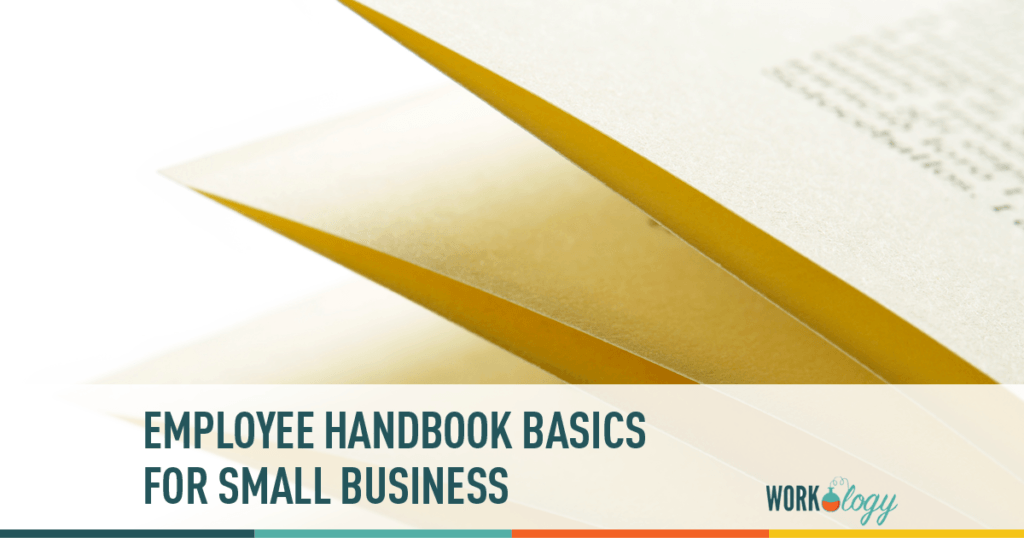Handbooks raise a lot of questions—especially for small businesses. Some small business owners wonder if they even need one. If there is a handbook, what should be included, and how can you ensure that the information in your handbook accurately reflects relevant labor laws? It is a good idea to have an employee handbook because it puts your policies in writing and minimizes the chance that you will hear a disciplined employee whine, “Nobody told me!”
When written well and followed, a handbook also shows that you are committed to a fair workplace free of discriminatory practices. It becomes the foundation for managing employees at your business. Even if you only have a handful of employees, having a basic handbook can lay the groundwork for solid HR policies as you grow. Whether you are starting from page one or just making updates, here are some basics for your small business employee handbook.
Don’t write it alone
If you are starting from scratch, start by exploring your options. You can hire someone to write your handbook for you. An employment attorney or HR consultant can be an excellent resource for this. Working with a professional is a collaborative process and is a good way to ensure that you have a handbook that reflects current laws as well as your company culture.
If you are looking to save some money, there are software options like this online company handbook creator that help you draft a handbook with prewritten policies. Just make sure that you are using software that includes policies relevant to your industry and location. Avoid picking and choosing policies without reading them and making edits to fit your company culture.
You should also enlist the help of others at your company. Consider working on the handbook with several people. In my experience of writing and updating handbooks, there are a lot of conversations about what a particular policy should say, so it is good to build that collaboration into the process of creating and updating your handbook.
Know state and local labor laws
I live in California. We are known for Hollywood, warm winters (it’s 77 as I write this) and enough state-specific employment laws to make us seem like a country separate from the U.S. This means that our employee handbooks look a bit different than those of our friends in other states. Even if you are not in California, there may be laws specific to your state that need to be reflected in your policies. Do not just go with what the federal law says, also read up on whether your state adds additional rights or protections. And do not forget to check on local requirements. For example, some cities have a higher minimum wage than what the state requires.
There are a lot of seminars (both online and in person) that provide annual labor law updates. Look for updates in your area. Many attorneys offer free or low cost updates specific to your state. A good presenter will provide materials that include links to the actual regulations. Many attorneys also provide updates on new laws on their blogs and email newsletters.
Understand your company culture
Legal requirements give you the basics for what your policy needs to include, but you may choose to offer more than the minimum. There are also policies for which the law provides little to no guidance.
For example, think about your vacation policy. While the law may dictate how an employee needs to be paid for vacation on termination, it’s up to you to determine things like accrual rates and how an employee requests vacation. For some companies, this means setting up unlimited vacation policies. For others, it means setting policies that require employees to ask for vacation time at least two weeks in advance. Figure out what works for your company, and use that to draft your policy.
Read and understand your handbook
All that work you put into your handbook becomes worthless if the handbook just sits on your shelf collecting dust. Once you have all your policies on paper, it is important that you read your handbook thoroughly. Know what you require of your employees.
Do not just give employees the handbook without taking the time to provide a bit of training. Review key policies with employees, and have them sign a form saying they have received the handbook and have familiarized themselves with the policies. Have them sign off on any updates as well. Remember that a handbook is a good way to communicate your expectations to your employees, so take the time to train employees on company policies.







